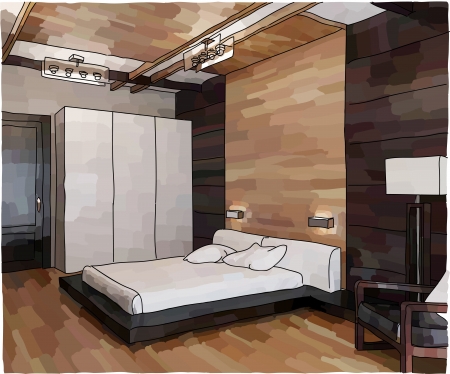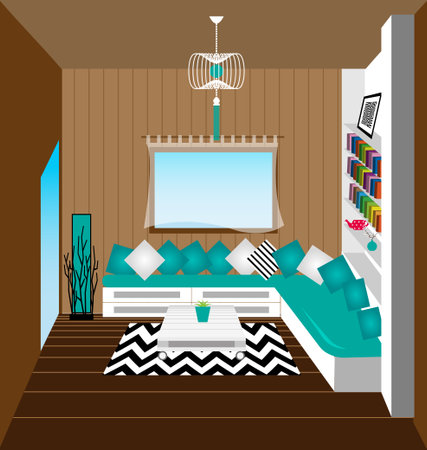Introduction to Modern Design in the Indian Context
India is witnessing a transformative wave in design, where modern aesthetics are being harmoniously blended with traditional sensibilities. The rise of modern design trends across the country is not just about sleek lines and minimalistic spaces—it is a reflection of evolving lifestyle preferences that cater to urban aspirations while honouring deep-rooted cultural values. Young homeowners, innovative architects, and forward-thinking businesses are seeking ways to create environments that feel both contemporary and authentically Indian. As global exposure grows, there is a marked shift towards interiors that are functional, sustainable, and visually striking. Yet, at the heart of this movement lies a respect for indigenous materials, artisanal techniques, and timeless motifs that have defined Indian craftsmanship for centuries. This unique synthesis is driving a new era in Indian design—one that celebrates progress without losing sight of heritage.
Celebrating Traditional Indian Materials
In the heart of India’s design evolution, the fusion of modern aesthetics with traditional materials is creating a new language for contemporary spaces. Time-honoured materials such as Khadi, terracotta, cane, bamboo, brass, and Jaipur marble have long been integral to Indian architecture and lifestyle. Today, these materials are making a strong comeback—not only for their visual charm but also for their unmatched sustainability and cultural resonance. Their versatility allows them to blend seamlessly with sleek lines and minimalist layouts while still echoing India’s rich heritage.
Material |
Traditional Significance |
Modern Application |
Sustainability Factor |
|---|---|---|---|
| Khadi | Symbol of Indian independence and self-reliance | Upholstery, drapes, wall panels | Hand-spun, eco-friendly, supports rural artisans |
| Terracotta | Used in ancient temples and homes for cooling properties | Tiles, decorative objects, facades | Natural material, low energy production process |
| Cane & Bamboo | Common in rural furnishings and crafts across India | Furniture, lighting fixtures, room dividers | Rapidly renewable resources, biodegradable |
| Brass | Auspicious metal in Indian rituals and decor accents | Lamps, handles, feature walls, statement pieces | Durable, recyclable, ages beautifully over time |
| Jaipur Marble | Favoured by royalty for palaces and monuments like Hawa Mahal | Flooring, countertops, sculptures, accent walls | Naturally occurring stone with longevity and timeless appeal |
The enduring allure of these materials lies in their ability to tell stories—each piece carrying its own legacy while being reimagined for urban lifestyles. By choosing these indigenous elements in design projects, architects and homeowners are not just making an aesthetic statement; they are also advocating for environmentally responsible choices and supporting local economies. This thoughtful blend of old and new is propelling India’s modern design movement into a future where tradition and innovation coexist harmoniously.

3. Fusion of Tradition and Innovation
In today’s ever-evolving Indian design landscape, the seamless blending of time-honoured materials with forward-thinking concepts has become a hallmark of innovation. Indian designers are reimagining traditional elements such as teak wood, brass, terracotta, and handwoven textiles by integrating them into sleek, modern forms that appeal to the aspirations of urban consumers. This fusion is not just about aesthetics—it’s about storytelling and cultural pride. For instance, a Bengaluru-based studio might use jaali (intricate latticework) crafted from sustainable bamboo, merging centuries-old craftsmanship with eco-conscious sensibilities. Similarly, new-age lighting fixtures inspired by temple lamps are now equipped with smart technology, offering both nostalgia and convenience in one package.
These creative reinterpretations allow Indian homes and commercial spaces to remain deeply rooted in cultural heritage while embracing global trends. Consumers in cities like Mumbai, Delhi, and Hyderabad increasingly seek interiors that feel uniquely Indian yet globally relevant—spaces where a carved rosewood coffee table sits harmoniously beside minimalist modular furniture. By bridging the past and present in this way, designers are fostering a sense of belonging and authenticity for India’s upwardly mobile clientele. Such harmonious fusion is not only shaping contemporary lifestyles but also ensuring that indigenous artistry evolves without losing its soul.
4. Case Studies from Leading Indian Design Houses
India’s design landscape has seen a remarkable evolution, where celebrated brands and studios have seamlessly fused modern aesthetics with time-honoured materials and techniques. The following case studies highlight how pioneering Indian design houses are setting benchmarks by balancing contemporary sensibilities with the rich heritage of local craftsmanship.
Fabindia: Revitalising Handlooms for Urban Lifestyles
Fabindia, one of India’s most iconic lifestyle brands, has made it its mission to adapt traditional handloom fabrics such as khadi and ikat into modern silhouettes. By working directly with rural artisans, Fabindia brings authenticity to urban wardrobes while supporting sustainable livelihoods. Their approach demonstrates how traditional materials can be reimagined for today’s conscious consumers without compromising on style or comfort.
Beyond Designs: Luxe Interiors with an Indian Soul
Beyond Designs is renowned for integrating intricate woodwork, brass inlays, and ethnic motifs into luxury interiors. Their projects exemplify how modern layouts can be enriched with carved wooden panels, jali screens, and antique finishes—giving each space a uniquely Indian yet globally appealing character. This blend of elements creates spaces that are both cosmopolitan and rooted in cultural identity.
Raw Mango: Contemporary Ethnic Fashion
Raw Mango has redefined the way traditional textiles like Chanderi and Banarasi are perceived in the high-fashion world. With minimalist cuts and bold colour blocking, their collections appeal to young Indians seeking heritage with a fresh twist. The label bridges the gap between generations by celebrating regional weaving traditions through innovative designs.
Snapshot of Leading Projects
| Design House/Brand | Traditional Material/Technique | Modern Application | Impact |
|---|---|---|---|
| Fabindia | Khadi, Ikat Handloom | Urban Apparel & Home Décor | Sustainable fashion, rural employment |
| Beyond Designs | Carved Teakwood, Brass Inlay | Luxe Residential Interiors | Cultural elegance in modern homes |
| Raw Mango | Chanderi Silk, Banarasi Weaves | Contemporary Ethnic Wear | Youthful revival of crafts |
| Anantaya Decor | Dhokra Metalcraft, Terracotta Pottery | Lifestyle Accessories & Lighting | Pioneering artisanal homeware trends |
| The Jaipur Rugs Company | Hand-knotted Wool & Silk Rugs | Bespoke Modern Carpets | Global recognition for Indian artisanship |
Cultural Sensitivity and Market Success
The above examples underscore a growing trend among leading Indian brands: leveraging indigenous materials not only preserves heritage but also meets the aspirations of new-age consumers. These success stories illustrate that when global design language is interpreted through an Indian lens—with respect for craft traditions—it results in products that resonate locally and internationally.
5. Embracing Sustainability and Local Artisanship
Modern design in India is increasingly defined by a conscious shift towards sustainability and the celebration of local craftsmanship. This trend isn’t just about aesthetics—its about making meaningful choices that support both the environment and the rich tapestry of Indian culture.
Sourcing Locally: Building a Responsible Supply Chain
Designers are now opting to source materials such as khadi, terracotta, bamboo, and reclaimed wood from local communities. By choosing these indigenous resources, brands reduce their carbon footprint while strengthening regional economies. This approach ensures that every project not only looks uniquely Indian but also contributes positively to the community.
Eco-Friendly Practices in Modern Design
From energy-efficient lighting to low-VOC paints and upcycled furnishings, eco-conscious design solutions are gaining momentum across metropolitan cities like Bengaluru and Mumbai. These practices resonate with young, environmentally aware urbanites who seek homes and workspaces that reflect their values—blending contemporary flair with responsible living.
Empowering Indian Artisans: A Win-Win for Tradition and Innovation
The backbone of this movement is the skilled Indian artisan. When designers collaborate directly with weavers, potters, or metalworkers, they preserve centuries-old techniques while introducing these crafts to new audiences. The result is a fusion of modern sensibility and traditional artistry—a hallmark of India’s evolving design landscape. By supporting artisans through fair wages, skill development, and co-creation, the industry not only uplifts local talent but also sets global benchmarks for ethical design.
6. Consumer Response and Market Trend Analysis
In recent years, Indian consumers have shown an enthusiastic response towards the fusion of modern design principles with traditional Indian materials. This unique blend appeals not only to aesthetic sensibilities but also to a growing sense of cultural pride among urban homeowners.
Evolving Preferences in Urban India
The new generation of Indian homebuyers and interior decorators are increasingly seeking spaces that reflect both global sophistication and indigenous heritage. The use of materials such as teak wood, terracotta, jute, and handloom textiles in sleek, minimalist settings resonates deeply with those who wish to maintain a connection to their roots while embracing a contemporary lifestyle.
Demand for Customisation and Local Artistry
There is a marked shift towards customised interiors, where clients actively participate in selecting materials and motifs that speak to their personal histories or regional identities. As a result, designers are partnering more frequently with local artisans and craft clusters, infusing spaces with authenticity and supporting Indias rich handicraft ecosystem.
Market Growth and Commercial Adoption
According to industry reports, the demand for culturally resonant yet modern interiors has seen double-digit growth over the past five years in metro cities like Bengaluru, Mumbai, and Delhi NCR. Hospitality projects, boutique hotels, and high-end residential developments are leading this trend, opting for design concepts that balance tradition with innovation.
The trend is also influencing mid-segment housing and commercial offices, where companies see value in offering employees and clients environments that celebrate Indian heritage while delivering world-class functionality. This demonstrates a maturing market where cultural context is considered essential for brand differentiation and customer engagement.
The Road Ahead
Looking forward, experts predict that the integration of modern design with traditional Indian materials will continue to gain momentum. As awareness about sustainability grows, locally sourced materials and time-honoured techniques are likely to become even more valuable. This ongoing evolution points towards an exciting future where Indian interiors stand out globally for their unique blend of legacy and innovation.

